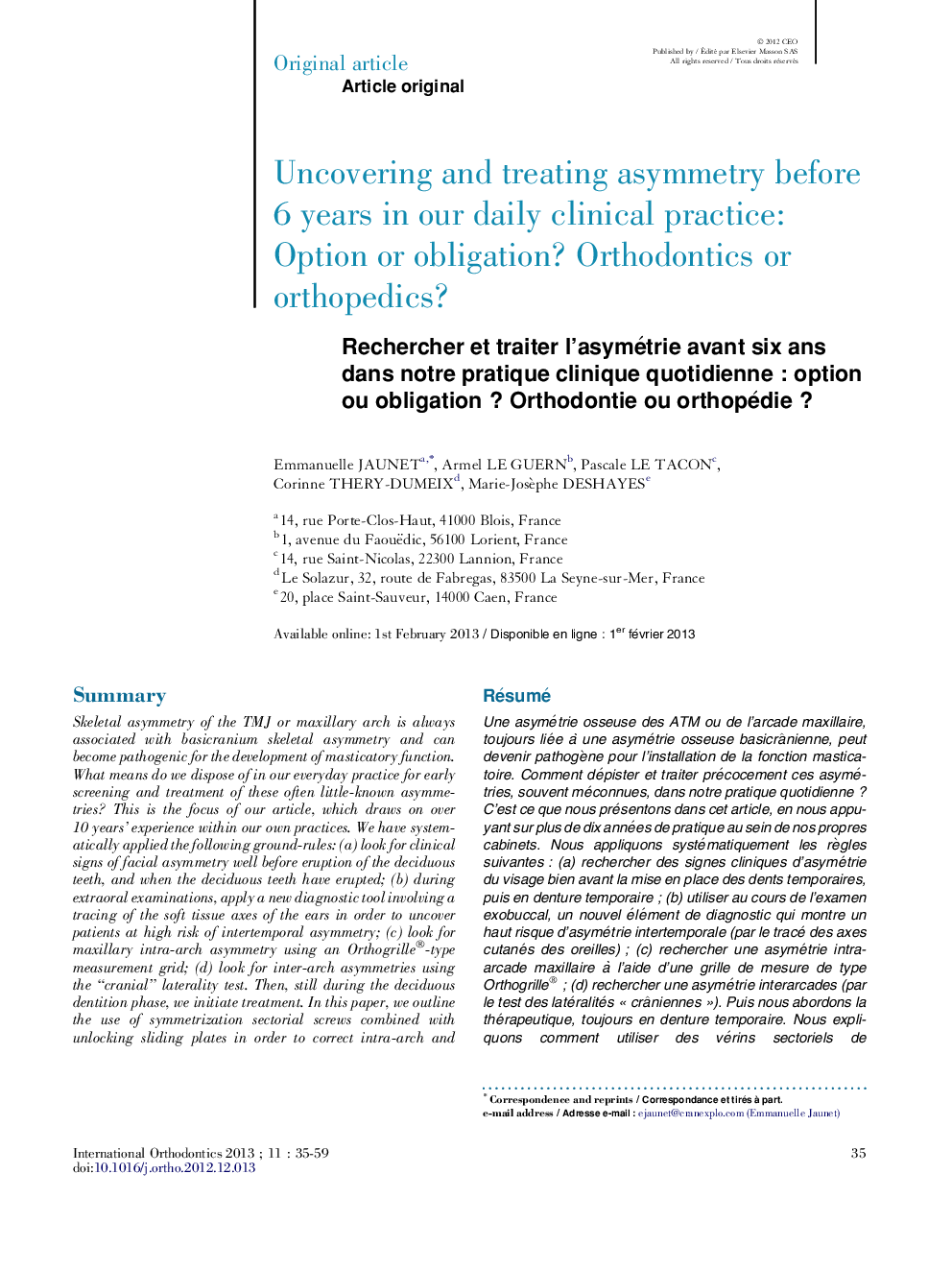| Article ID | Journal | Published Year | Pages | File Type |
|---|---|---|---|---|
| 3135719 | International Orthodontics | 2013 | 25 Pages |
Abstract
Skeletal asymmetry of the TMJ or maxillary arch is always associated with basicranium skeletal asymmetry and can become pathogenic for the development of masticatory function. What means do we dispose of in our everyday practice for early screening and treatment of these often little-known asymmetries? This is the focus of our article, which draws on over 10Â years' experience within our own practices. We have systematically applied the following ground-rules: (a) look for clinical signs of facial asymmetry well before eruption of the deciduous teeth, and when the deciduous teeth have erupted; (b) during extraoral examinations, apply a new diagnostic tool involving a tracing of the soft tissue axes of the ears in order to uncover patients at high risk of intertemporal asymmetry; (c) look for maxillary intra-arch asymmetry using an Orthogrille®-type measurement grid; (d) look for inter-arch asymmetries using the “cranial” laterality test. Then, still during the deciduous dentition phase, we initiate treatment. In this paper, we outline the use of symmetrization sectorial screws combined with unlocking sliding plates in order to correct intra-arch and inter-arch asymmetry. We conclude by outlining techniques to remedy canted occlusal plane using a modified Fränkel-type appliance.
Keywords
Related Topics
Health Sciences
Medicine and Dentistry
Dentistry, Oral Surgery and Medicine
Authors
Emmanuelle Jaunet, Armel Le Guern, Pascale Le Tacon, Corinne Thery-Dumeix, Marie-Josèphe Deshayes,
